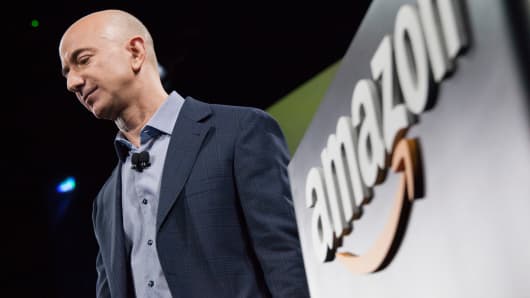Amazon has a solution for employees who no longer want to work there — pay them to quit.
Once a year, the company offers to pay full-time associates at Amazon fulfillment centers up to $5,000 to leave the company. Employees are eligible after one year of service, but there is a caveat: Those who accept the offer can never work at Amazon again.
“We want people working at Amazon who want to be here,” Amazon spokesperson Melanie Etches tells CNBC Make It via email. “In the long-term, staying somewhere you don’t want to be isn’t healthy for our employees or for the company.”
The company offers $2,000 to employees who have been at the company one year, and the offer increases by $1,000 per year of tenure, maxing out at $5,000.
This program, which is called Pay to Quit, was first created by online shoe retailer Zappos, which Amazon bought in 2009. Zappos only extended the offer to its newest employees, within the first few weeks of employment, and the “quitting bonus” was set at $1,000.
Amazon claims that they don’t actually want employees to accept the offer. In fact, the headline on the memo states “Please Don’t Take This Offer,” according to founder and CEO Jeff Bezos.
So why bother presenting it in the first place?
“The goal is to encourage folks to take a moment and think about what they really want,” Bezos writes in a 2014 shareholder letter. And according to Amazon, few people actually accept.
Considering the high costs associated with employee turnover, incentivizing employees to quit may sound like a counter-intuitive business strategy. But according to Michael Burchell, workplace culture expert and author of the book “The Great Workplace: How to Build It, How to Keep It and Why It Matters,” it actually enhances employee engagement and is cost-effective in the long run.
“If you choose to actually not take the money and you choose to stay, it means that you’re committed to the organization and committed to your work,” says Burchell. “It helps to frame the employer/employee bargain or that psychological contract.”
In effect, employees who decline the offer are psychologically “signing on the bottom line” and recommitting to the company, says Burchell. This makes them more engaged, more productive, and ultimately boosts Amazon’s bottom line.
Studies support this logic. An analysis by Gallup found that teams with high employee engagement have 21 percent higher productivity than their counterparts, while research from UNC Kenan-Flagler Business School found that companies with highly engaged employees have an average three-year revenue growth 2.3 times greater than organizations whose employees are engaged at an average level.
On the flip side, disengaged workers are more likely to accept the offer, says Burchell, and these types of employees cost organizations a substantial amount of money. According to Gallup, an actively disengaged employee, someone who is unhappy and unproductive at work, costs their organization $3,400 for every $10,000 of salary, or 34 percent. That means a disengaged employee who makes $70,000 annually costs their organization $23,800 a year.
By presenting this offer, Amazon is able to weed out disengaged employees, says Burchell. Though it may cost the company more money to rehire and retrain someone in the short-term, he says, Amazon is able to then fill that position with a more qualified employee.
“It’s worth it to them financially in the long run.”









